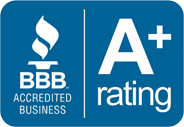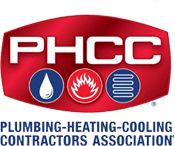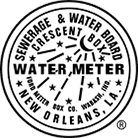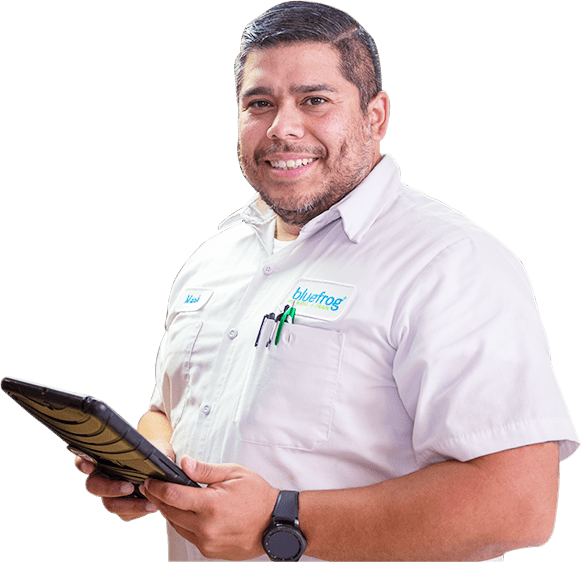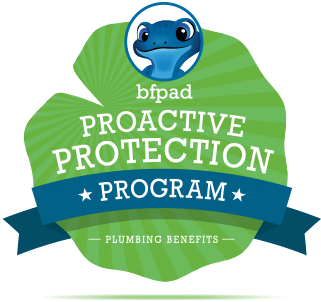
Safeguard Your Home: The Essential Guide to Backflow Testing
Imagine turning on your tap and knowing the water is safe to drink, cook with, and bathe in. This peace of mind comes from understanding and implementing backflow testing in your home.
Backflow testing is not just a regulatory requirement; it’s a critical safeguard for your health.
In this article, we unveil the importance of backflow testing, a preventive measure that ensures your household water remains uncontaminated and safe for daily use.
We will guide you through the what, why, and how of backflow testing, including its costs, finding certified testers, and understanding its significance in maintaining a safe home environment. Prepare to dive into the essentials of keeping your water supply secure.
What is a Backflow Test?
A backflow test is a critical procedure designed to ensure that your drinking water remains safe from contamination. This test is essential for detecting whether there’s a risk of contaminated water reversing flow and entering the clean water supply through your plumbing system.
Conducting a backflow test annually is a regulatory requirement in many areas, aimed at protecting public health by preventing the mixing of potable water with hazardous substances that could be present in non-potable water sources.
The process involves a certified backflow tester using specialized equipment to check the functionality of backflow prevention devices. These devices are installed in plumbing systems to allow water to flow in one direction only — towards the user — and to block it from flowing backward.
If a backflow prevention device fails during the test, it indicates that there’s a potential for contaminated water to enter the clean water supply, posing a risk to health and safety.
Therefore, a backflow test not only ensures compliance with local water safety regulations but also provides homeowners with peace of mind, knowing their water supply is protected against contamination.
It’s a fundamental component of a comprehensive water safety and maintenance program for any property connected to a municipal water system.
Also read: Discover The Magic Of Whole House Reverse Osmosis Systems: A Must-Have For Every Home
Understanding Backflow Prevention
Backflow prevention is a critical component of maintaining a safe and healthy water supply in any residential or commercial property. It’s designed to protect potable water from contamination or pollution due to backflow.
But what exactly leads to the need for such a measure, and how do these devices ensure your water remains safe to use and consume?
The Mechanics of Backflow
Backflow occurs when there’s an unexpected change in water pressure, causing water to flow in the opposite direction from its intended path. This can happen in two main ways: backpressure and backsiphonage.
Backpressure is when the downstream pressure is greater than the supply pressure, which can be caused by a pump, elevation difference, or boiler.
On the other hand, backsiphonage occurs when there is a negative pressure in the supply system, often resulting from a sudden drop in water pressure due to a break in the water main or heavy water demand elsewhere in the system.
These pressure changes can allow contaminated water from irrigation systems, pools, or industrial fluids to enter the clean water supply through cross-connections. Understanding these mechanics is crucial for homeowners and property managers to grasp the importance of regular backflow testing.
It’s not just about compliance with regulations; it’s about ensuring the health and safety of all water users.
How Backflow Prevention Devices Work
Backflow prevention devices are ingeniously designed to block contaminated water from reversing into the clean water supply. There are several types of backflow preventers, each suited to different situations and levels of risk.
For instance, an air gap is the simplest and most effective means of preventing backflow, involving a physical separation between the water supply outlet and the receiving vessel.
However, in situations where an air gap is not feasible, mechanical devices such as reduced pressure zone (RPZ) assemblies, double check valves, and pressure vacuum breakers are used.
These devices work by creating barriers or checks that respond to pressure changes, preventing contaminated water from flowing back into the clean supply.
Regular backflow testing, conducted by a certified backflow tester, ensures these devices are functioning correctly.
It’s a specialized process that assesses whether the preventers are operating as they should, providing an essential line of defense against water contamination.
The Importance of Certified Backflow Testing
The role of a certified backflow tester cannot be overstated. These professionals have undergone specific training to understand the complexities of plumbing systems and how to accurately test backflow prevention devices.
They are equipped with the knowledge and tools to identify potential issues and ensure that the devices are in optimal working condition.
Regular backflow testing is not only a regulatory requirement in many areas but also a critical preventative measure.
The cost of backflow testing is a small price to pay for the assurance it provides. Knowing that your water supply is protected from contamination helps ensure the health and well-being of everyone who relies on it.
Furthermore, employing a certified backflow tester ensures that the testing is done accurately and in accordance with local regulations, avoiding potential fines and ensuring that your property remains in compliance.
Locating Backflow Testing Services Near You
Finding a reputable backflow testing service is easier than ever before. Many services now offer online booking and can provide detailed information on their qualifications and the testing process.
When searching for “backflow testing near me,” look for companies that boast certified backflow testers and have good reviews from customers. It’s also wise to compare backflow testing costs among different providers to ensure you’re getting a fair price for the service.
Understanding backflow prevention and ensuring your property has a functioning backflow preventer tested by a certified professional is paramount.
Regular testing not only complies with legal requirements but also, more importantly, protects your water supply from contamination, safeguarding the health of your household or business.
The Importance of Regular Testing
Regular backflow testing is a critical procedure mandated by municipalities to ensure the safety and integrity of the community’s water supply.
This process involves checking the functionality of backflow prevention devices to ensure they are operating correctly and effectively preventing contaminated water from entering the clean water supply.
Let’s delve deeper into why this testing is so crucial and how it benefits both individual property owners and the wider community.
Municipal Mandates for Backflow Testing
Municipalities require annual backflow testing to protect public health. This mandate stems from the potential risks that backflow incidents pose to the community’s water supply.
Contaminated water can carry harmful bacteria, chemicals, and other pollutants that pose serious health risks.
By requiring property owners to conduct an annual backflow test, municipalities aim to prevent such contaminants from entering the public water system.
These regulations are enforced through local water safety codes and health regulations, which specify the types of properties that must have backflow prevention devices and the frequency with which these devices must be tested.
Compliance with these mandates is not optional; it’s a legal requirement for property owners. Failure to comply can result in fines, water service interruptions, and even legal action in some cases.
The goal is to ensure a proactive approach to water safety, minimizing the risk of contamination before it can occur.
How Backflow Testing Protects the Community
Backflow testing plays a pivotal role in safeguarding the community’s water supply. When a certified backflow tester conducts a backflow test, they are not only checking the mechanical function of the prevention devices but also ensuring that the water supply remains uncontaminated and safe for consumption.
This testing process helps identify potential failures or weaknesses in the system before they can lead to a backflow incident.
The broader impact of regular backflow testing is significant. It helps prevent outbreaks of waterborne illnesses, which can have devastating effects on communities.
Safe drinking water is a cornerstone of public health, and backflow testing is a key component in maintaining this essential resource. By ensuring that backflow preventers are functioning correctly, municipalities can significantly reduce the risk of contamination, protecting the health and well-being of their residents.
The Role of Certified Backflow Testers
The importance of using a certified backflow tester for your annual backflow test cannot be overstated.
Certified backflow testers have undergone specialized training to understand the complexities of backflow prevention systems. They are equipped with the knowledge and tools necessary to accurately assess the functionality of backflow preventers and identify any issues that may compromise the system’s integrity.
A certified backflow tester will provide a detailed report following the backflow test, outlining any repairs or adjustments needed to ensure the device is functioning correctly.
This expertise is crucial for property owners to navigate the complexities of backflow prevention and comply with municipal regulations.
When searching for “backflow testing near me,” it’s essential to verify the tester’s certification and experience to ensure reliable and accurate testing results.
Understanding Backflow Testing Costs
The cost of backflow testing is a consideration for property owners, but it’s important to view this expense in the context of the protection it provides.
Backflow testing costs can vary depending on the location, the complexity of the backflow prevention system, and the rates of the certified backflow tester. However, investing in regular backflow testing is a proactive measure that can prevent costly and potentially harmful contamination incidents.
Property owners should consider backflow testing as part of their routine property maintenance budget. While the cost may seem like an additional expense, it is far outweighed by the benefits of ensuring a safe water supply and complying with legal requirements.
Additionally, some municipalities offer resources or recommendations for affordable backflow testing services, making it easier for property owners to fulfill their testing obligations.
Also read: 4 Signs You Need A Drain Cleaning Service
How to Find a Certified Backflow Tester
Locating a certified backflow tester is a crucial step for property owners to ensure their water systems are safe and compliant with local regulations. This process involves understanding where to look, what certifications to seek, and how to verify the qualifications of the tester.
Let’s explore how you can find a professional qualified to conduct backflow testing, providing you with compliance and peace of mind.
The Importance of Certification
Certification is the cornerstone of a qualified backflow tester’s credentials. It signifies that the individual has undergone specific training and passed examinations that cover the complexities of backflow prevention, testing procedures, and local water regulations.
Certified backflow testers are familiar with various types of backflow prevention devices and are equipped to conduct tests accurately and efficiently.
When searching for a backflow tester, it’s essential to look for certifications from recognized industry organizations or local regulatory bodies. These certifications ensure that the tester has the necessary knowledge and skills to perform a backflow test according to the standards required for maintaining water safety.
Certifications also indicate that the tester is up-to-date with the latest backflow prevention technologies and testing methods.
How to Find a Certified Backflow Tester
Finding a certified backflow tester near you requires a bit of research and due diligence. Start by consulting your local water utility or health department; they often maintain a list of certified backflow testers in the area and can provide recommendations.
Additionally, professional plumbing associations and trade organizations are valuable resources for finding qualified testers. These organizations typically have directories of their certified members, making it easier to locate a professional in your vicinity.
Another effective method is to search online for “backflow testing near me” or “certified backflow tester.”
This can lead you to local companies specializing in backflow testing and prevention services.
When browsing online, pay close attention to customer reviews and testimonials, as these can provide insights into the tester’s reliability, professionalism, and quality of service.
Verifying a Tester’s Credentials
Once you’ve identified potential backflow testers, it’s important to verify their credentials before hiring them.
Ask for proof of certification and ensure it’s valid and recognized by your municipality. A reputable tester will have no issue providing documentation of their qualifications.
In addition to certification, inquire about the tester’s experience with backflow testing, particularly with systems similar to yours.
Experienced testers are more likely to identify potential issues and ensure that your backflow prevention device is functioning correctly. It’s also advisable to check if the tester is insured, offering an additional layer of protection in case of any issues during the testing process.
Understanding Backflow Testing Costs
When selecting a certified backflow tester, it’s also important to discuss the backflow testing cost upfront.
Costs can vary based on the complexity of your backflow prevention system, the location, and the tester’s rates. Obtaining quotes from multiple testers can provide a range of pricing, helping you budget for the test.
However, remember that the lowest price may not always equate to the best value.
Consider the tester’s qualifications, experience, and reputation alongside the cost. Investing in a thorough and accurate backflow test conducted by a highly qualified professional is crucial for ensuring your water supply’s safety and compliance with local regulations.

Photo By hapecharge at iStock
Navigating the Costs of Backflow Testing
Understanding and managing the costs associated with backflow testing is crucial for homeowners and property managers.
The price of a backflow test can vary widely depending on several factors, including the location, the complexity of the system, and the qualifications of the tester.
Let’s delve into what influences backflow testing costs and provide some guidance on how to budget for this vital service.
Factors Influencing Backflow Testing Costs
Several key factors can affect the cost of a backflow test. Firstly, the location of the property plays a significant role.
Prices can vary by region due to differences in the cost of living, the availability of certified backflow testers, and local regulations. Urban areas might have higher rates due to a greater demand for professional services.
Secondly, the complexity of the backflow prevention system itself can impact the price. Systems that are more complex or difficult to access may require more time and specialized equipment to test, leading to higher costs.
Additionally, if repairs or replacements are needed, this will further increase the overall expense.
The qualifications and experience of the backflow tester also play a role in determining the cost.
Certified backflow testers who have extensive experience and a strong reputation in the industry may charge more for their services, but the added expense can be worth it for the peace of mind and assurance of quality they provide.
Tips for Budgeting for Backflow Testing
Budgeting for backflow testing requires some foresight and planning.
One approach is to inquire about the testing costs during the annual maintenance check of your plumbing system. This allows you to incorporate the backflow test expense into your overall maintenance budget.
It’s also wise to get quotes from several certified backflow testers to compare prices. However, remember that the cheapest option may not always be the best. Consider the tester’s qualifications, experience, and the thoroughness of the service they provide when making your decision.
Another tip is to set aside a small amount of money each month in anticipation of the backflow test. This way, when the time comes for the test, the cost won’t be a sudden financial burden.
Some municipalities or water utilities may offer assistance programs or discounts for backflow testing, so it’s worth checking if any cost-saving measures are available in your area.
The Long-Term Value of Regular Backflow Testing
While there are upfront costs associated with backflow testing, it’s important to consider the long-term value of this service.
Regular backflow testing helps prevent water contamination incidents, which can have serious health implications and lead to costly clean-up and remediation efforts.
Investing in regular backflow testing can also help avoid fines and penalties associated with non-compliance with local regulations.
By ensuring that your backflow prevention device is functioning correctly, you’re not only protecting the health of those who use your water supply but also safeguarding your property against potential legal and financial liabilities.
Understanding Backflow Testing Costs and Services
When discussing backflow testing costs with a certified backflow tester, ask for a detailed breakdown of the services included in the price. This should cover the inspection and testing of the backflow prevention device, a report of the findings, and any recommendations for repairs or improvements.
Understanding exactly what you’re paying for can help you assess the value of the service and ensure that no unnecessary costs are added.
Navigating the costs of backflow testing involves understanding the factors that influence pricing, budgeting appropriately, and recognizing the long-term value of ensuring your water supply remains safe and compliant.
By taking a proactive approach to managing these costs, homeowners and property managers can protect their properties and communities from the risks of water contamination.
The Science Behind Backflow
Understanding the science behind backflow is essential for comprehending why backflow test and prevention are crucial to maintaining a safe water supply.
Backflow occurs when the normal flow of water is reversed, which can introduce contaminants into clean water. This section delves into the mechanics and principles that cause backflow, highlighting the importance of preventing such occurrences.
Pressure Variations and Their Effects
One of the primary causes of backflow is a change in water pressure. In a typical plumbing system, water is supposed to flow in one direction: from the supply lines to the consumer.
However, when there is a sudden drop in pressure on the supply side or an increase in pressure on the consumer side, the normal flow can be reversed.
This phenomenon can occur for various reasons, such as a water main break, heavy water usage in one part of the system, or even firefighting efforts that use large volumes of water quickly.
These pressure variations can compromise the integrity of the water supply, allowing contaminants from soil, storage, or other sources to enter the system through cross-connections.
Understanding how pressure changes affect water flow is fundamental to grasping the necessity of backflow prevention measures.
Types of Backflow: Back Pressure vs. Backsiphonage
Backflow can manifest in two main forms: backpressure and backsiphonage. Backpressure backflow happens when the downstream pressure in a plumbing system becomes higher than the supply pressure.
This can be caused by pumps, temperature increases in boilers, or other mechanical means.
Backsiphonage, on the other hand, occurs when there is a negative pressure (vacuum) in the supply system. This negative pressure can suck contaminated water back into the clean water supply, much like drinking through a straw.
Backsiphonage is often the result of a sudden reduction in water pressure, such as during a water main break or when a fire hydrant is opened for use.
Both types of backflow present significant risks to water purity and public health, underscoring the importance of having effective backflow prevention devices in place.
The Role of Check Valves and Air Gaps
To combat the risks of backflow, various prevention devices have been developed, including check valves and air gaps. Check valves are mechanical devices designed to allow water to flow in only one direction. They automatically close to prevent backflow when water attempts to reverse direction due to pressure changes. There are several types of check valves, including swing check, spring-loaded, and ball check valves, each suited to different applications and levels of risk.
Air gaps, considered the simplest and most effective means of backflow prevention, provide a physical separation between the end of a water supply outlet and the flood-level rim of a receiving vessel.
This gap ensures that backflow cannot occur because there is no direct connection for the water to reverse flow through. Air gaps are commonly used in situations where the risk of contamination is high, such as with sinks and toilets.
Understanding the mechanics behind backflow and the principles of its prevention is crucial for anyone responsible for maintaining a safe water supply.
Regular backflow test, conducted by a certified backflow tester, ensures that these preventive measures are functioning correctly, safeguarding against contamination risks. This foundational knowledge of how backflow occurs and is prevented highlights the critical nature of backflow prevention in protecting public health and maintaining water quality.
Types of Backflow Prevention Devices
Backflow prevention devices are essential components in safeguarding drinking water from contamination. Various types of devices are designed to handle different backflow scenarios, each with its specific application and effectiveness.
Understanding these devices helps homeowners and property managers make informed decisions about protecting their water supply.
Reduced Pressure Zone (RPZ) Devices
Reduced Pressure Zone (RPZ) devices are among the most reliable backflow preventers used in both residential and commercial settings.
They are designed to protect against both backpressure and backsiphonage, making them suitable for high-risk applications where the potential for contamination is significant.
An RPZ device consists of two independent check valves, separated by a pressure differential relief valve that opens to the atmosphere should either check valve fail.
RPZ devices are typically used in situations where the water being protected is at risk of contamination from substances that could pose a health hazard. This includes irrigation systems, industrial applications, and any scenario where the water supply connects to equipment or systems containing chemicals or other pollutants.
The key advantage of RPZ devices is their ability to provide protection even under conditions of backpressure, making them a comprehensive solution for backflow prevention.
Double Check Valve Assemblies
Double Check Valve Assemblies (DCVAs) are another common type of backflow preventer, consisting of two check valves in series. These devices are designed to prevent backflow due to backsiphonage or backpressure in lower-risk situations.
DCVAs are often used in residential sprinkler systems, fire protection systems, and non-health hazard industrial applications.
The primary advantage of DCVAs is their simplicity and reliability. They are less expensive than RPZ devices and easier to install and maintain.
However, they do not provide the same level of protection as RPZs, especially in high-risk scenarios, because they lack a means to relieve pressure should both check valves fail.
Pressure Vacuum Breakers (PVBs)
Pressure Vacuum Breakers (PVBs) are designed to protect against backsiphonage only and are commonly used in irrigation systems and other outdoor water connections.
A PVB includes a spring-loaded check valve that closes when water flow stops, and an air inlet valve that opens to break the siphon when pressure drops.
PVBs are effective and economical choices for applications where backpressure is not a concern. They must be installed at least 12 inches above the highest point of water usage to function correctly, which can limit their application in certain scenarios. Regular maintenance and freezing protection are crucial for PVBs to ensure their reliability and effectiveness.
Atmospheric Vacuum Breakers (AVBs)
Atmospheric Vacuum Breakers (AVBs) are the simplest and most cost-effective backflow preventers. They work by allowing air to enter the system, preventing siphoning and backflow.
AVBs are suitable for low-risk applications and are typically used in residential settings, such as hose bibs or non-pressurized irrigation systems.
AVBs must be installed at the highest point in the system and cannot be subjected to continuous pressure, making them less versatile than other backflow preventers.
Despite these limitations, AVBs provide an effective solution for specific applications where the risk of contamination is minimal.
Understanding the types of backflow prevention devices available and their appropriate applications is crucial for ensuring the safety of a water supply. Whether it’s a residential home or a commercial property, selecting the right backflow preventer depends on the specific needs and risks associated with the water use.
Regular backflow test, conducted by a certified backflow tester, is essential to verify that these devices are functioning correctly and providing the necessary protection against water contamination.
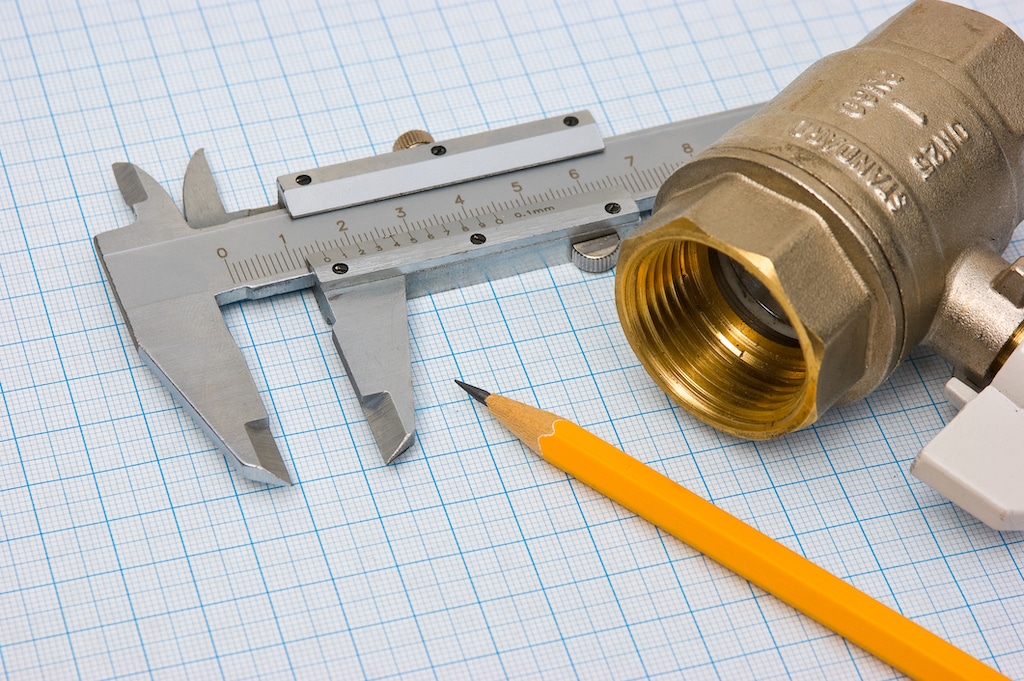
DIY Backflow Preventer Inspection and Maintenance
Regular inspection and maintenance of backflow preventers are crucial for ensuring the safety and integrity of your home’s water supply.
While professional backflow tests are necessary, homeowners can take proactive steps to maintain their backflow preventers.
This guide will provide insights into how you can inspect and maintain your device, including safety precautions, signs of malfunction, and knowing when it’s time to call a professional.
Routine Inspection Checklist
Conducting routine inspections of your backflow preventer can help identify potential issues before they escalate.
Start by visually inspecting the device for any obvious signs of damage, such as cracks, rust, or leaks. Ensure that the device is accessible and not covered by landscaping or debris, as this can affect its operation.
Check for any signs of water leakage around the device, as this could indicate a seal failure or a crack in the body.
Also, listen for unusual sounds, like continuous dripping or hissing, which could suggest a problem with the internal valves or air vents.
It’s important to familiarize yourself with the specific type of backflow preventer installed in your property, as the inspection points may vary. Most devices will have test cocks and shut-off valves, which should be in good working order and not show signs of corrosion or damage.
Simple Maintenance Tips
Maintaining your backflow preventer involves a few simple steps that can significantly extend its lifespan and ensure its effectiveness.
Firstly, ensure that the area around the backflow preventer is clear of debris and vegetation. This not only facilitates airflow but also prevents pests from nesting in or around the device.
Periodically, gently clean any accessible parts of the device with a damp cloth to remove dirt and grime. However, avoid using harsh chemicals or abrasive materials that could damage the device.
During colder months, protect your backflow preventer from freezing temperatures by insulating it with approved backflow insulation covers. Never use improvised materials like blankets or plastic bags, as these can retain moisture and lead to freezing.
Lastly, ensure that the test cocks and shut-off valves are operable. Gently turn them to ensure they’re not seized up, but avoid forcing them if they’re stiff or difficult to move.
Signs You Need Professional Help
While routine inspection and simple maintenance can be handled by homeowners, certain signs indicate the need for professional intervention.
If you notice continuous water leakage, significant rust or corrosion, or if the device has been subjected to freezing temperatures without proper insulation, it’s time to call a certified backflow tester.
Other indicators include an inability to operate the shut-off valves or test cocks, unusual noise during operation, or if the device has been physically damaged by landscaping activities or external impacts.
Remember, conducting a backflow test is not a DIY task and requires a certified professional. If your routine inspection or maintenance activities reveal any issues that you’re not equipped to handle, don’t hesitate to contact a certified backflow tester near you.
Regular professional backflow test is essential to ensure that your device is functioning correctly and to maintain compliance with local regulations.
How to Choose a Backflow Test Service
Selecting the right backflow test service is crucial for ensuring the safety and compliance of your water supply system.
With the potential risks associated with improper backflow prevention, it’s essential to choose a reliable and qualified service provider. This guide will outline the key criteria to consider when choosing a backflow test service, including certifications, questions to ask, and how to verify the tester’s qualifications.
Certification and Licensing
The first and most critical step in choosing a backflow test service is to check for proper certification and licensing.
A reputable backflow tester should have certifications from recognized industry organizations, such as the American Backflow Prevention Association (ABPA) or the American Water Works Association (AWWA). These certifications ensure that the tester has undergone the necessary training and examinations to competently test backflow prevention devices.
Additionally, backflow testers should be licensed by the state or local jurisdiction in which they operate.
Licensing requirements vary by location but generally include passing an exam and completing continuing education courses.
Always ask for proof of certification and licensing before hiring a backflow testing service. This not only verifies their qualifications but also ensures they are up-to-date with the latest backflow testing standards and regulations.
Questions to Ask Before Hiring
Before selecting a backflow testing service, it’s important to ask the right questions to ensure they are a good fit for your needs.
Inquire about their experience with backflow testing, specifically if they have worked with properties similar to yours.
Ask about the testing process, including how long it will take, what steps are involved, and if they handle submitting test results to the local water authority.
Other important questions include:
- How often do they recommend testing for your specific backflow prevention device?
- What are the costs involved, and what does the price include?
- How do they handle repairs or replacements if issues are found during the test?
Getting clear answers to these questions will help you understand the service provider’s expertise, reliability, and customer service approach.
bluefrog Home Services of New Orleans: Your Go-to Backflow Testing Experts
Bluefrog Home Services of New Orleans is a premier provider of plumbing and backflow testing services in the New Orleans area, including Harvey, LA, and Timberlane, LA.
Recognizing the critical importance of maintaining a safe and compliant water supply, bluefrog’s team of certified professionals is dedicated to ensuring that your backflow prevention devices are functioning correctly.
With a focus on customer service and technical excellence, bluefrog Home Services offers comprehensive backflow testing to identify any potential issues that could compromise your water quality.
Their certified backflow testers are equipped with the latest tools and technology to perform accurate and efficient tests, ensuring that your system meets all local and state regulations.
For homeowners and property managers in New Orleans, Harvey, and Timberlane, bluefrog Home Services provides a convenient and reliable solution for all your backflow testing needs.
To learn more about their services or to schedule a backflow test, visit their Google page at bluefrog Home Services of New Orleans or call them at 504-229-4848.

Photo By Makhbubakhon Ismatova at iStock
FAQs
- What is a backflow test and why is it important?
A backflow test is a procedure to check if your backflow prevention device is working correctly to prevent contaminated water from flowing back into your clean water supply. It’s crucial for protecting your health and ensuring your water system complies with local regulations.
- How often should I have a backflow test performed?
Most local regulations require that backflow prevention devices be tested annually. However, it’s a good practice to check with your local water authority for specific requirements in your area.
- Can I perform a backflow test myself?
Backflow testing should be performed by a certified backflow tester. Certification ensures that the tester has the necessary training and expertise to accurately assess your backflow prevention device.
- What happens if my backflow preventer fails the test?
If your device fails the test, it will need to be repaired or replaced to ensure it functions correctly. Your backflow tester can often provide repair services or recommend a qualified professional.
- How much does backflow testing cost?
The cost of backflow test can vary depending on your location, the type of device, and the tester’s rates. It’s best to get quotes from several certified testers in your area to find the best price.
For any specific questions about backflow testing services in New Orleans, Harvey, or Timberlane, or to schedule a test, contact bluefrog Home Services of New Orleans at 504-229-4848.
Read our previous blog post.
Check out this tip!
Manny Mitten


